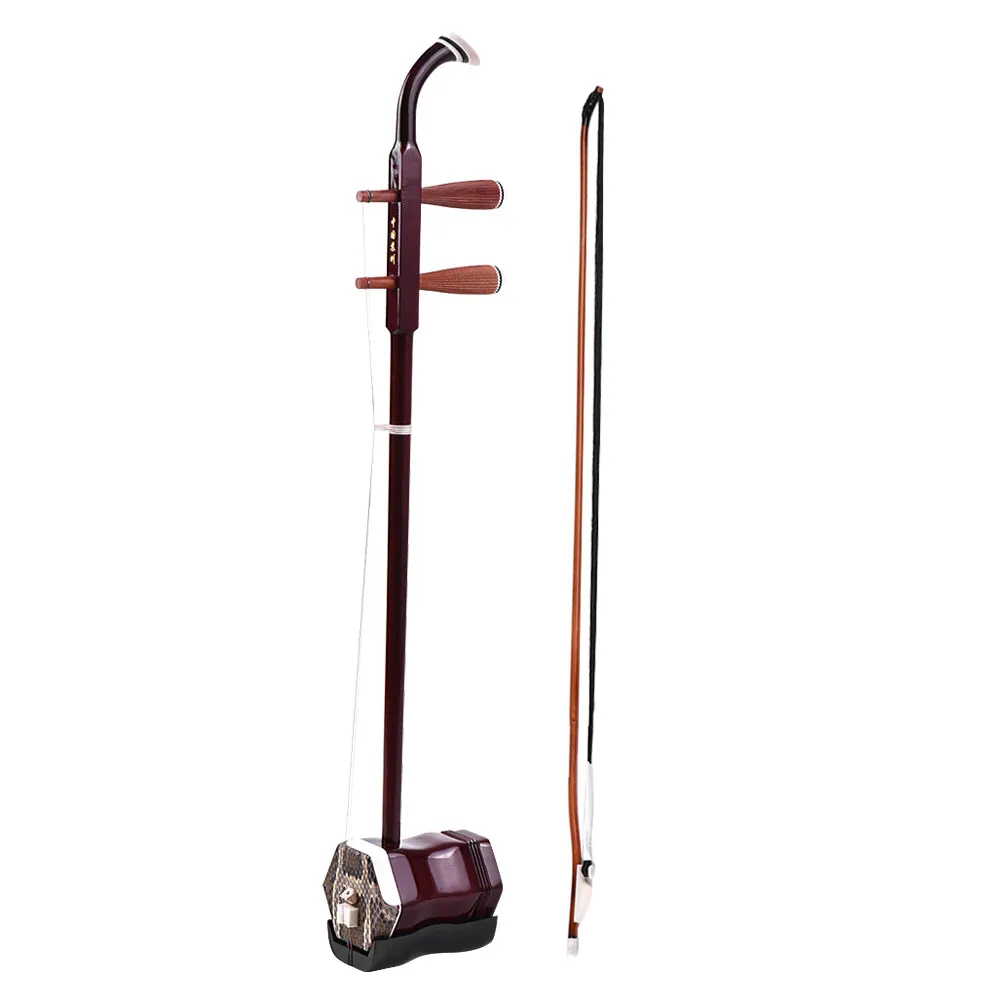
The tone quality is mellow and graceful and has a typical Chinese flavour. Besides right-hand techniques, the left hand can play vibratos, glissandos, etc. The structure of Today'skonghouis a combination ofsu-konghouandwo-konghouwith the shape similar to harp. The reproduction of thekonghoustarted in the mid 50's. Unfortunately not much of this ancient instrument has been preserved. There were thewo-konghou(horizontalkonghou),su-konghou(vertical konghou) and phoenix-head konghou. The structure of thekonghoulooks similar to the harp, however, with its bridges spanning the strings in the way similar to guzheng. Konghou- One of the most ancient Chinese music instruments that appeared in written texts of the Spring and Autumn period (around 600 BC). In the same family there are the Japanese koto, the Vietnamese dan tranh and the Korean kayagum Zheng or Guzheng- Chinese zither with movable bridges and 16 - 25 strings. However, the guqin repertoire has been better preserved than all other instruments. Due to this reason, a lot of ancient repertoire were lost with the pass-away of masters or the written scores were burned or destroyed in war or turmoil.

The situation for today has not been improved much, which is a shame. Unfortunately only small number of people in China could play the instrument, because classical musical education of this kind has never reached general public. The guqin has historically been regarded as the symbol of Chinese high culture. In Imperial China, a scholars and ladies of the high society were expected to master the four arts, namely, theqin(guqin),qi(weiqi or Go),shu(Calligraphy), and hua (painting). To learn to play qin used to be regarded as a very important element for education for the purpose of enriching the heart and elevating human spirit. Confucius (around 600 BC) was a master of this instrument. It is literally called qin yet commonly known as "guqin" where "gu" stands for ancient. Guqin- seven-stringed zither without bridges, the most classical Chinese instrument with over 3000 years of history. Yueqin- moon-shaped lute with shorter neck and four strings, played with a spectrum, used for accompanying local operas. There are family of ruan of various size including "Zhong Ruan" (middle Ruan) and "Da Ruan" (large Ruan) used in the same sense as viola and cello in western orchestra.

TheRuanis mostly used for Peking opera, and now also in modern Chinese orchestra. Just before execution, he performed his famous composition "Guang Ling San" in front of his students and friends to encourage them and to bit farewell. Ruan Xian refused to serve the tyrant emperor Sima, and preferred to live as truly artist. Since the introduction of the odd-like lute through the "silk-road" in the early Tang Dynasty (around 5th century), the pipa gradually developed into the present form, and the old form of pipa with straight-neck and round body got the name "Ruan", after the name of the master player of this instrument, Ruan Xian who was one of the seven great scholars known as "The Seven Gentlemen" in Chinese history of the 3rd century (the Six Dynasties).

Ruan- very ancient four-stringed moon-shaped lute with long and straight neck and various number of frets, dated back at least to Qin Dynasty (around 200 BC).Ruanis used to be called "p'i-p'a" (pipa) or qin-pipa. The sanxian is most popular in the north. This instrument is often used for accompanying folk songs and local opera. A piece of plectrum is used to play the instrument. The sound-body is made of round wooden box covered with snake skin, just likeerhu. In Chinese, "san" and "xian" stands for "three" and "strings", respectively. Sanxian- A long necked lute with three strings without frets.

However, in recent decades, Composer Wang Huiran made great contribution to its making and composed many pieces such that theliuqinalso becomes a soloist instrument. Liuqin - a smaller version of pipa with four strings,which sound similar to mandolin.Liuqinis played with a piece of spectrum, and is used to be accompany instrument for folk songs and local opera. This instrument has extremely wide dynamic range and remarkable expressive power.
2 stringed instrument full#
The pipa history can be dated back at least 2,000 years and developed from pentatonic to full scales. The instrumentalist holds thepipaupright and play with five small plectra attached to each finger of the right hand. Pipa- four-stringed lute with 30 frets and pear-shaped body.


 0 kommentar(er)
0 kommentar(er)
